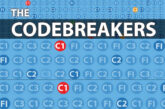
Bill Allan offers advice on dealing with scenarios where a previous installation may comply with an earlier version of BS 7671, but not the current edition.
When carrying out an Electrical Installation Condition Report (EICR) on an electrical installation which had been wired or rewired a decade or so earlier, the electrical inspector is likely to be reminded that the requirements of BS 7671 have changed in that time.
Take for example, an EICR on an existing installation in a home which is supplied by a TN-C-S system. The premises had been rewired in November 2008 and the test results of the Electrical Installation Certificate (EIC) are available. When testing the value of earth loop impedance (Zs) on a ring final circuit (RFC), the inspector notes that the measured Zs value is above the maximum value permitted by BS 7671:2018.
The RFC is protected by a Type B 32A circuit-breaker (cb) to BS EN 60898 and the maximum Zs value permitted by Table 41.3 (a) of BS 7671:2018 is 1.37 ohms but the measured value is 1.43 ohms. Clearly, the required 0.4 second disconnection time in the event of a line to Earth fault on this circuit couldn’t be guaranteed. Having carried out the ‘dead’ tests, the inspector concludes that the high Zs value isn’t due to damage or loose connections.
On consulting the EICR, the inspector discovers that when the house was rewired, the first version of the 17th Edition Wiring Regulations was in use (the one with the red cover).
Being curious as to whether the Zs figure of 1.43 ohms complied with this earlier version of BS 7671, the inspector digs out the old 2008 book which was gathering dust in the garage.
The inspector discovers that Table 41.3 (a) of that edition permitted a maximum Zs value for a 32A Type B CB of 1.44 ohms. Therefore, the measured Zs value of 1.43 ohms was acceptable in 2008. But an EICR must be carried out to the current BS 7671, so this measured value is no longer acceptable in 2019.
The inspector notes this result on the EICR, and in Section K, Observations, gives a FI, Further Investigation, which can lead to a C2 classification code to such circuits, indicating that the installation is potentially dangerous.
If the C2 code is confirmed, the inspector must record in Section E, Summary of the condition of the installation that the installation is in an unsatisfactory condition for continued use and recommend in Section F, Recommendations that urgent remedial action is required.
Prior to handing over the EICR to the customer, the inspector can consider some options available to reduce the Zs value.
Protection by 30mA RCD
As the installation was designed to an earlier version of BS 7671, the socket-outlets may not be protected by a 30mA residual current device (RCD). If this is the case, the inspector can recommend that one or more RCDs be fitted and rely on them to give the 0.4 second disconnection time.
Table 41.5 allows a maximum permitted Zs of 1667 ohms for a 30mA RCD although Note 2 to Table 41.5 states that a value exceeding 200 ohms may not be stable.
Appendix 3, Table 3A of BS 7671 shows that a 30mA general, non-delay RCD will operate within 300mS (0.3s).
It should be noted that the use of a 30mA RCD to increase the maximum permitted Zs level can be used on TN systems as well as TT systems (See Regulation 411.4.204) but an overcurrent protective device will still be required for overload and fault current protection in accordance with Chapter 43.
Replace CB with an RCBO
The 32A CB for the RFC could be replaced by a 32A RCBO to BS EN 61009, making the measured value of 1.43 ohms acceptable.
Reduce the current rating of the CB
If the CB is overrated for the load, the current rating of the CB could be reduced. Reference to Table 41.3 (a) shows that reducing the Type B CB from 32A to 20A would increase the maximum permitted Zs to 2.19 ohms.
Run an additional circuit protective conductor (cpc)
Running an additional cpc will reduce the value of R2 and hence the value of Zs.
Use supplementary equipotential bonding
Regulation 419.3 permits supplementary bonding in accordance with Regulation 415.2 to be used where automatic disconnection cannot be achieved within the required disconnection time. Section 419 should be consulted for the full details.
The requirements for additional protection by the use of supplementary bonding are found in Regulation 415.2 and Regulation Group 544.2.
Supplementary equipotential bonding may reduce the Zs but it’s purpose is to hold the voltage between simultaneously accessible metallic parts to 50V for five seconds in the event of an earth fault until the relevant overcurrent protective device operates.
Regulation 415.2.2 requires that the resistance, R of the supplementary bonding conductor in AC systems is limited by the equation
where,
R = the maximum resistance in ohms
Ia = the current in amps required to operate the overcurrent protective device within 5 seconds
For an RCD, Ia is the rated residual operating current of the RCD, I∆n.
Worked example
An AC final circuit is protected by a 32A Type B CB and the csa of the copper bonding conductors is 4mm2. What is the maximum permitted length of the bonding conductors?
Solution
Maximum permitted resistance,
Fig. 3A4 in BS 7671 indicates that a current of 160A will disconnect the 32A CB within 5 seconds.
The resistance of 4mm2 copper conductors is given in Table I1 of the On-Site Guide as 4.61 mΩ/m (0.00461 Ω/m).
Maximum permitted length,
Conclusion
The completion of the EICR enabled the electrical inspector to draw attention to the fact that the installation didn’t comply with the present edition of BS 7671 and to decide whether it was in an unsatisfactory condition. The inspector is then able to make specific recommendations for the most suitable remedial action.
For more information please visit: https://www.napit.org.uk/











